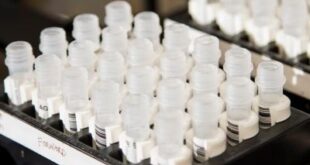For over 3,500 years, tales of “healing Aloe Vera” plants have been handed down through centuries by word of mouth. It is probably one of the most discussed, but least understood medicinal plants in history. The ancient Greeks, the Romans, the Babylonians, Indians and Chinese have all used Aloe Vera as a medicinal plant.
Throughout the years Aloe Vera has been called by many names like Potted Physician, Wand of Heaven, Wonder Plant, Heaven’s Blessing and Plant of Life.
Aloe as a Natural healer has been a household remedy for Indians for centuries. The Nutrient rich Aloe leaf contains over 75 nutritional components and 200 other compounds, including 20 minerals, 18 amino acids and 12 vitamins.
Aloe has tremendous benefits for your health inside, and out. Inside, Aloe supports digestive health, promotes a healthy immune system, supports nutrient absorption and boosts natural energy levels. Outside, Aloe moisturizes, conditions and soothes the skin.
Aloe Vera in general works in 3 stages i.e Cleansing Stage, Nourishment Stage and Therapeutic Stage. Let us understand how Aloe Vera works externally when applied on Skin. Aloe has a small molecular structure, aloe’s component Lignin helps in penetration to the skin. Natural cleanser Saponin cleans with sweeping action. Aloe has similar pH balance as skin.
Hyperpigmentation is the excess production of melanin in the skin, and appears as dark patches or spots. It is caused by sun exposure, aging and hormonal changes. Hyperpigmentation occurs in the form of freckles, age spots, melasma, postinflammatory hyperpigmentation and acne scars. Two chemicals in the aloe vera plant, aloin and aloesin, have been shown to lighten skin pigmentation. Aloin has been demonstrated to break up melanin in the skin, while aloesin prevents melanin formation by inhibiting the activity of tyrosinase, an enzyme responsible for melanin production.
When excess Melanin is produced by your skin, it leads to hyper pigmentation which results in dark spots. Some of the common causes for the same are – when you overexpose yourself to UV rays, stress, scars from acne or hormonal changes. Even at times these hyper pigmentation and dark spots are not dangerous but they may tip off an underlying condition.
The molecular structure helps aloe penetrate quickly within the various layers of the skin, even to the muscles of the body thereby acting as anti-wrinkle and skin rejuvenator.
By Mr. Harish Singla , CSM Forever Living Products India / FLP India
 Newspatrolling.com News cum Content Syndication Portal Online
Newspatrolling.com News cum Content Syndication Portal Online






